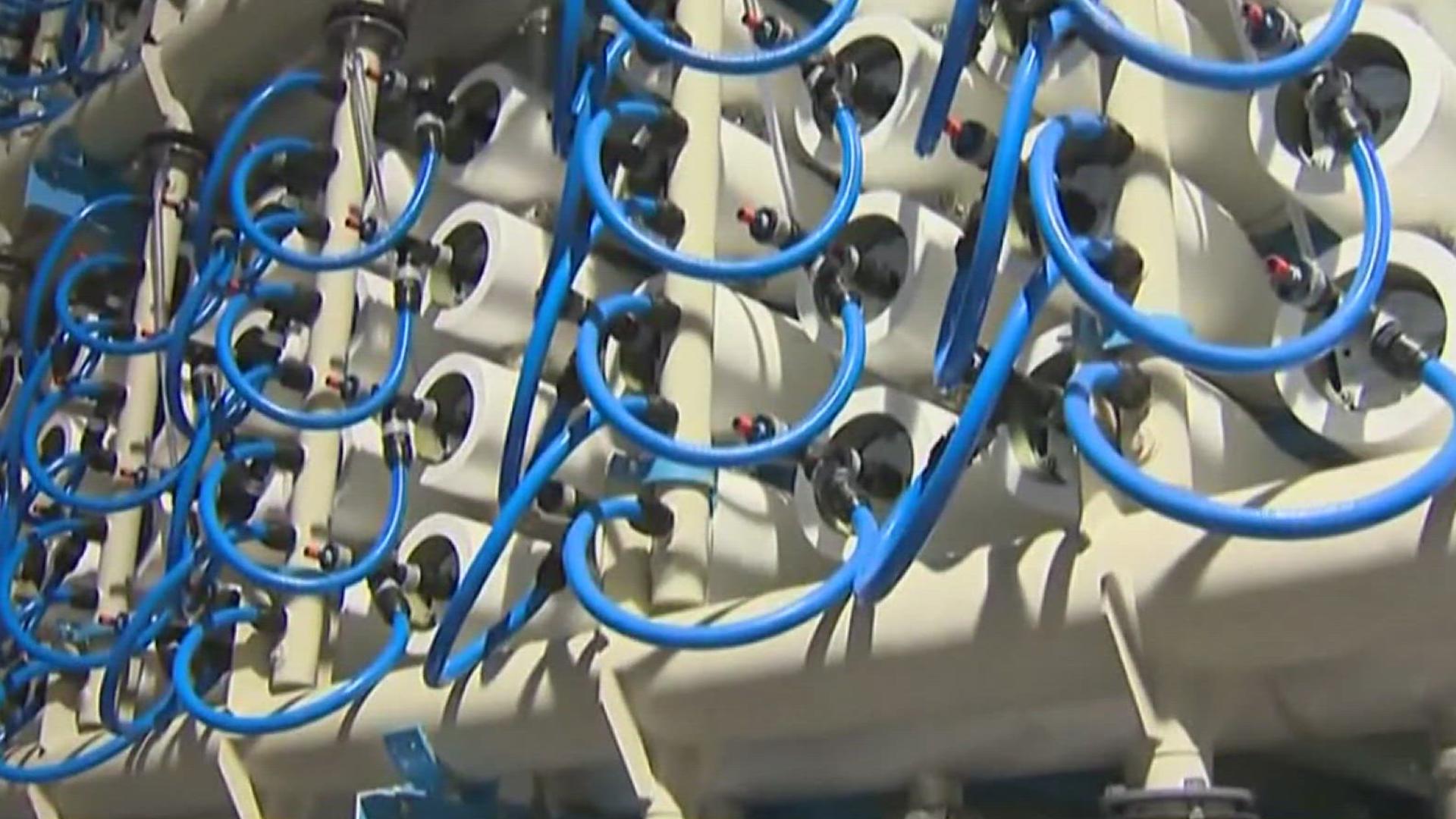CORPUS CHRISTI, Texas — Our city's water sources continue to drop every week as we shave percentage points from our combined lake level.
Right now, city officials are actively seeking long-term water solutions.
One of those efforts getting the most attention is a seawater desalination plant. However, even if it gets all its permits the earliest it could help would be 2028.
Our supply is currently based on surface water and that is based upon rainfall. Experts say we need a lot of it to move the needle on our lakes. Until that happens, water experts say conserve, but it might not be enough.
As our weather shifts from El Nino to La Nina this summer, hydrologist Dorina Murgulet at Texas A&M University- Corpus Christi said the change could bring that much needed tropical rain.
"We say rain right, and a lot of rain, for that to happen and to fill the reservoirs quickly as we would need them that might be flooding," Murgulet said.
Long term, city leaders are looking for drought-proof solutions.
"I would tell you that the conversation revolving around desalination has been one that we're we're very optimistic about," Corpus Christi Water Chief Operating Officer Drew Molly said.
Molly testified last week at the Senate Committee on Water in Austin about the City's efforts to bring a seawater desalination plant to the area.
"We have to get this right, we know that the two of the most important factors in this project are affordability to our ratepayers, and the environmental stewardship that has to go alongside with this project," he said.
City Manager Peter Zanoni said federal and state permits are in review.
"We have no reason to think we're not going to get either the state or the federal permits as precedent exists already of issuing permits," Zanoni said.
At the end of June, city council will select a design builder for the project that would be located in the Inner Harbor and would be able to produce up to 30 million gallons of water a day.
3NEWS asked Zanoni if the city can still grow without desal.
"Don't think so," he said. "We know that there's, a short list of about a half a dozen companies that want to come here and open up manufacturing plants. They are large volume users in the five to 10 million gallons a day range."
Zanoni said one desal plant won't be enough to keep up with demand and provide water security for the area.
"So we're already looking at another plant, whether it's in, in partnership with the Port of Corpus Christi at Harbor Island now, which would be a very sizable location," he said. "In other words, we could scale up over 100 million gallons a day, or the city's other site that they chose, the City Council chose over six years ago, which is La Quinta Channel that's in the bay, close to the center, San Patricio County, over there on that side of the bay."
Desal is not the only option on the table.
Discussions are underway to spend $100 million to fix the Mary Rhodes Pipeline and the city is looking at water reuse essentially recycling treated wastewater.
"We're looking at some groundwater sources in the nearby area, we're looking seriously at reuse," Zanoni said. "And so we know we discharge about 30 million gallons of treated water into our bays and estuaries, and ocean. A lot of cities nowadays are capturing that water and reusing it, it could be for industrial use, or it could be for potable use."
Those long term options however, could take years.
Meantime, residents are asked to conserve.
Stage 3 water restrictions could come by the end of summer, but Murgulet said if we want to see a bigger impact -- it has to involve industry. Industry is said to use about 50 percent of the water while residential and businesses use the other half.
"Everybody has to take part in this, we can not have exemptions for some of our largest users," Murgulet said. "That is where if we cut a slice of that 50 percent pie, we are going to go back up right?"
3NEWS asked the city manager if it was a mistake to bring some of the newer industry into the city before we got desal.
"I don't think so," Zanoni said. "We at the time when we brought them in, we had sufficient water in our reservoirs and these droughts of record that we're in today are cyclical so they don't they don't stick around long term, although this one is a stubborn one. So, I think the policy setters at the time, the indicators were a safe, safe solution, or safe choice to bring in more large volume users."

